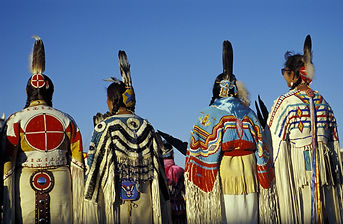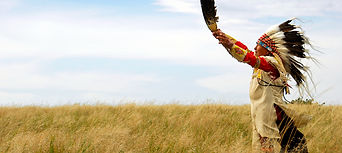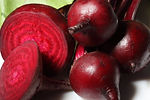
Native American Literature Anthology 2.0
Sara Downs
Tiffany Midge
Tiffany Midge is apart of the Hunkpapa Lakota tribe. She is an award winning writer and also performs poetry. She wants to go back to school and study Native American studies and creative writing.

1



Beets
Father was always more interested in the idea of something reahter than the actuality; to him bigger meant better. My father liked large things, generous mass, quantity, weight. To him, they represtened progress, ambition, trust. Try as he ight to be a true renegade, adopt Indian beliefs and philosophies, even go so far as to marry and Indian woman, he still could never avoid the obvious truth. He was a white man. He liked to build large things.
Mrs. Morton didn't discourage this faux pas but, rather, rattled on about how noble, how Christian, of the Indians to assist the poor colonists n the unsettling and overwhelming wilderness they'd arrived at. My classmates collected my offering of turnips and at recess we rounded up a game of turnip baseball. Lisa Parker got hit in the face with a turnip and went bawling to the school nurse. Mrs. Morton ignored me the rest of the day and sent me home with a note to my parents, which said, Please do not allow this to happen again.
The short story "Beets" by Tiffany Midge is a great example of Indian humor. This story is sarcastic and witty, and really breaks away from the deep, serious, works that are commonly associated with Native American writers. In the first paragraph selected, the young girl is describing her father. He was a white man desperately trying to be Indian. He wanted to get back to the land and have a large garden to grow his own fruit. However, he doesn't do this modestly. Instead, he creates a land plot that takes up the entire backyard and it will produce more food than the family would ever be able to consume. In this way the father is acting completely opposite from what Native Americans stand for. He doesn't create in moderation, he creates in excess. He wants the biggest and best garden. He is living by the white man's motto "go big or go home." No matter how hard the father could try, he would never be truly Indian. He would always be white. Nothing could change that, even marrying an Indian woman, or growing a gardent to get back to the land.
The second paragraph also represents the tolerance of Native Americans in the white community. At first the teacher allows the young girl to distribute the turnips among her classmates. She even goes as far as to say that they white man owes his survival to the Indians. Without Squanto, the pilgrims would have surely died of starvation and would never have flurished on the land. However, Mrs. Morton's tolerance soon turned to intolerance as soon as it was inconvenient for her. When a Lisa Parker was hit and injured by the girl's turnip, she was quick to reprimand her and put an end to the turnips. As quick as Mrs. Morton was to praise the Indian people, she was even quicker to blame. This is shown throughout history, as well. The white man made peace with the Indian as long as it benefited him. As soon as the government didn't get anything from the peace with the natives, they took their land, and blamed them for the country's short comings. It's not enough to be tolerant, society must be completely excepting to make any sort of a difference.
I thoroughly enjoyed reading this short story. It was a breath of fresh air from the constant serious selections I had been reading. It made me laugh and it made me think. The dad represents every hypocritical action that the white man made throughout the history of Native Americans and the white man. He's all for accepting people who are different from him, but when it comes down to it, he will only accept them if he gets something in return. He doesn't embrace the culture, he makes it white. The young girls in the story represent the oppression of the Indian people, but in a lighter way. It represents how even under the most hostile circumstances, the Native Americans are able to find humor under the most unfavorable circumstances. I also like how this short story is able to defeat a lot of the stereotypical images of the Indian. It was brought to light a lot of the social problems, yet it did so in a way that was light and fun to read.
